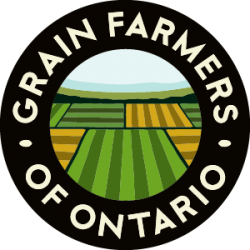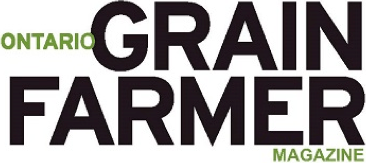Soybean seedling diseases – characterization and education
Principal Investigator: Albert Tenuta1 and Jason Bond2
Research Institution: Ontario Ministry of Agriculture, Food and Rural Affairs (OMAFRA) 1 and Southern Illinois University2
Timeline: April 2015 – March 2018
Objectives:
- Determine effect of environmental conditions on the aggressiveness of seedling pathogens.
- Identification of fungal and oomycete species associated with soybean and potentially corn.
- Identification of field conditions (moisture, temperature, and chemical properties) that favor seedling diseases.
- Diagnostic tools that will aid in diagnosing problem fields and aid other research endeavors by public and private researchers.
- Development of management strategies and assess current production practices as they relate to seedling diseases.
- Development of regional and Ontario extension publications as a traditional fact sheet, and digitally as a video.
Impacts:
- The understanding of the distribution of the various pathogen species (Fusarium, Phytophthora, Pythium, Rhizoctonia, etc.) can be used by growers to implement an Integrated Pest Management (IPM) strategy to choose appropriate disease management solutions, such as fungicide seed treatments that are tailored by region/field to have maximum efficacy and to reduce losses due to disease.
- The information gathered will assist soybean breeding efforts for more efficient soybean variety development, by allowing breeders to screen varieties with the pathogen species found in an area/region; this will lead to more consistent disease ratings for growers since results indicate differences in pathogen populations between regions based on soil temperature and latitude.
- The collaboration efforts between US and Ontario researchers will increase efficiencies and communication, such as the production of new extension publications based on results from this project which will be distributed in Ontario and the US (e.g. Crop Protection Network).
Scientific Summary:
Soybean is a high value food and feed crop in Ontario and the US that is heavily impacted by root and stem rot diseases caused by Fusarium, Rhizoctonia, Phytophthora sojae and by several Pythium species. Soybean is an economic mainstay in Ontario and losses to these diseases have increased because of lack of resistance genes for Rhizoctonia, Pythium and Fusarium. Resistance genes are also losing their effectiveness against Phytophthora. Moreover, increasing adoption of early planting and no-till farming has also increased soybean losses due to soil-borne diseases. Increasing competition for the soybean crop from industrial and bioenergy uses has put further pressure on soybean production for food and animal feed. Producers will see benefits in the form of management recommendations and coordinated educational efforts because of Ontario’s participation in this regional project.
This project continued to build on work started in the joint US/Ontario project titled, “Soybean seedling disease management” (May 2012 to February 2015) that sought to determine the impact of environmental conditions on the epidemiology of important seedling pathogens such as Pythium, Phytophthora, Rhizoctonia, Fusarium, and others, and management options to minimize their economic impact to producers and the soybean industry. Unlike the previous project, two separate proposals were submitted to the United Soybean Board and the North Central Soybean Research Program. The NCSRP and USB team collaborated and worked together in a similar manner to the previous 3-year joint, USB-NCSRP project which GFO supported as part of Ontario’s participation. Results from this project were combined with the Oomycete-Soybean Coordinated Agricultural Project (CAP) project which included 28 co-project researchers from 17 institutions in the US with the Virginia Bioinformatics Institute at Virginia Tech as the lead institution (Brett Tyler was the lead PI). The CAP project was funded at over $9,000,000 by the Agriculture and Food Research Initiative (AFRI) of the National Institute of Food and Agriculture (NIFA, formerly CSREES), an agency within the U.S. Department of Agriculture (USDA).
Project Extension publications continued from “Soybean seedling disease management” (May 2012 to February 2015) as well as new initiatives including a seed treatment efficacy table which will be updated annually. Other print and web-based publications include, but were not limited to, impact of cover crops on seedling diseases, fungicide resistance, and the impact of environment of stand establishment.
Executive Summary:
Seedling diseases rank in the top five disease threats to soybean production in North America and number two after soybean cyst nematode in Ontario. In Ontario, soybean seedling diseases and Phytophthora losses range from 20,000 to 110,000+ metric tons (800,000 to 4,300,000 bushels) at a potential cost of $10,000,000 to $50,000,000 (Cash Price – $11.96 Dec 4, 2014) (Wrather et al, 2010, Plant Health Progress and Wrather, Koenning and Anderson, 2003, Plant Health Progress). In the US, oomycete pathogens (Phytophthora and Pythium species) are estimated to reduce yields by 1.5 million tons per year. Pathogens responsible for seedling diseases are a problem to manage because of their insidious nature which makes them difficult to diagnose and control. It is nearly impossible to predict when they will take a heavy toll, until it happens. Researchers agree that information is lacking about the biology of the individual pathogens and the factors involved in disease development in the field environment. This project builds on a previous GFO funded project (S2012ID05) which aimed to identify the causal agents of seedling disease, develop new tools for rapid diagnosis, develop new protocols for research and for germplasm screening assays, and develop management recommendations for producers and the industry. The knowledge gained will direct future efforts toward oomycete management strategies, through improved diagnostics, screening of soybean breeding material and chemical management approaches
Soilborne pathogens and other fungal organisms associated with soybean (Glycine max) seedling roots were collected and identified across the northern soybean production region in the previous study. There were 3,418 isolates identified as oomycetes (Phytophthora and Pythium) while another 222 isolates were identified as fungi (Fusarium, Rhizoctonia and other genera). They continue to be evaluated for the ability to cause disease. Many new species of Pythium and a new Phytophthora pathogen (P. sansosema) were detected in Ontario samples. Of the 24 oomycete species that have been reported as root pathogens of soybean, 16 were isolated in our study from a total of 84 isolates. There are 13 oomycete species not reported before to be associated with soybean seedlings which caused substantial damage in root assays. The work continues to determine the significance of these new species in terms of disease risk.
Among the 21 highly virulent species reported in this study, 4 species (P. drechsleri, Py. cryptoirregulare, Py. kunmingense and Py. periplocum) are novel or new pathogenic species for soybean while another 22 pathogenic species infected at lower levels of which 9 of these 22 species had not been previously reported to infect soybean, (Py. conidiophorum, Py. longisporangium, Py. contiguanum, Py. vanterpoolii, Py. nagaii and Py. longandrum; and the Phytopythium aff. vexans, Phytopythium litorale and Aphanomyces spp.). Pathogenicity tests continue to determine whether these isolates found associated with soybean pose a risk to yields and productivity in the region.
The research group has been perfecting techniques to isolate organisms, developing inoculation assays and identifying better inoculum carriers. One of the primary goals was to develop future protocols for soybean germplasm screening. In one example, results from field trials for Rhizoctonia solani were used to develop greenhouse assays that will allow researchers to develop mapping populations so resistance genes can be found in soybean. The lack of a rapid simple greenhouse screening technique has been a major limitation in the development of Rhizoctonia tolerant varieties or identifying potential resistance genes to combat the disease. The anastomosis group determination of 24 Rhizoctonia isolates from Ontario found 18 of the Ontario isolates are AG-2-2IIIB while the other 6 have not been categorized yet. This will help better target breeding efforts to those Rhizoctonia species which are most prevalent in Ontario.
Work continued in 2015 on the oomycete species collected from soybean production areas in Ontario and the US which has resulted in the first comprehensive study and characterization of these species. This project provided a basis for future disease management and education activities of not only traditional oomycete pathogens such as Phytophthora sojae, but new species, particularly the various new Pythium species we have found. The information from Ontario and the northern US will aid in future variety development as well and will assist both public and private breeding programs. Working with our US colleagues provided us with an opportunity to anticipate potential future pathogen population shifts which may occur due to changing agronomic practices, climate change or other factors thus again helping to minimize losses.
The use of fungicide seed treatments has increased over the past decade in the region, and in Ontario it is a necessary production cost not only to maximize early season stand establishment but yield and quality as well. Ontario work conducted through this project was instrumental in getting a new active ingredient (ethoboxam) registered for Canada by Valent Corporation. The amount of metalaxyl on seed has been decreasing in the province and this project helped us in promoting increased metalaxyl or supplemental amounts of the product onto seed, especially in those clay areas of the province such as Essex, Lambton, Niagara, Northumberland which have chronic Phytophthora and Pythium problems. We continue to investigate seed treatment fungicides that impact the various seedling pathogens.
An important aspect of this joint project was to foster communication and cooperation between the various researchers in the participating states (13) and Ontario. Researchers on this project and the USDA-NIFA oomycete project worked together and shared methods and protocols for use in the collection and organization of fungal pathogens of soybean seedlings. This collaboration allowed for greater efficiency and communication, and the opportunity to join in these larger funded projects: the USB/NCSRP (over $1.5M for 3 years) and the Oomycete-Soybean Coordinated Agricultural Project (OSCAP), a transdisciplinary effort of 28 co-project researchers at 17 US institutions (funding $9,000,000 USD). The OSCAP Project entered its last year and will be completed in 2017. This project has led to increased communication and coordination among universities and has enabled this team to make significant progress. Two new extension publications aimed at “Identifying Seedling Diseases” and “Phytophthora root rot” have been developed and are presently being distributed. A new soybean seed treatment fungicide efficacy table was also published.
External Funding Partners:
Funding for the collaborating US partners and publications was through United Soybean Board (USB), North Central Soybean Research Program (NCSRP) and the USDA-NIFA Coordinated Agricultural Program (CAP).
Project Related Publications:
Rojas, J.A., Jacobs J., Napieralski, S., Karaj, B., Bradley, C.A., Chase, T., Esker, P., Giesler, L., Jardine, D., Malvick, D., Markell, S., Nelson, B., Robertson, A., Rupe, J., Smith, D., Sweets, L., Tenuta, A., Wise, K., Chilvers, M.I. 2017. Oomycete species associated with soybean seedlings in North America-Part I: Identification and Pathogenicity Characterization.Phytopathology. 107(3): 280-292.
Rojas, J.A., Jacobs J., Napieralski, S., Karaj, B., Bradley, C.A., Chase, T., Esker, P., Giesler, L., Jardine, D., Malvick, D., Markell, S., Nelson, B., Robertson, A., Rupe, J., Smith, D., Sweets, L., Tenuta, A., Wise, K., Chilvers, M.I. 2017. Oomycete species associated with soybean seedlings in North America – Part II: Diversity and ecology in relation to environmental and edaphic factors. Phytopathology. 107(3): 293-304.

